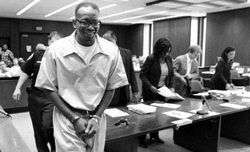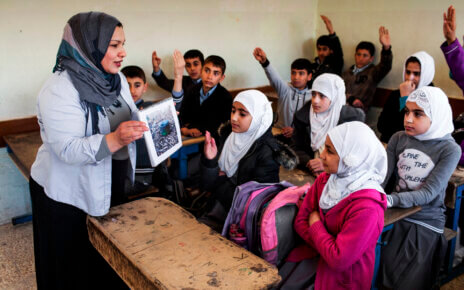A jury has found Kyle Rittenhouse, who killed two people and wounded another in Kenosha last year following civil unrest, not guilty on all charges.
As the United States grapples with the narrative around the legacy and aftermath of the Black Lives Matter protests and racial unrest that took place in the summer of 2020, a benchmark issue stemming from this period has had its fate decided. Kyle Rittenhouse, an 18-year-old Illinois resident, was acquitted on all charges brought against him by the State of Wisconsin. Rittenhouse was charged with the murders of Joseph Rosenbaum and Anthony Huber, as well as the attempted murder of Gaige Grosskreutz. Except Rosenbaum, none were residents of Kenosha.
On Aug. 23, 2020, Kenosha Police responded to a 9-1-1 call concerning a domestic incident. A woman had called the police and said her boyfriend, Jacob Blake, was at her house despite not being permitted to be so. He had taken her car keys and was refusing to return them to her.
Officers responding to the scene made note of a warrant out for Blake’s arrest, which was based on charges of third-degree sexual assault, disorderly conduct with connection to domestic abuse, and trespassing. The woman who had called 9-1-1 had a previous police history with Blake, with her alleging he had sexually assaulted her multiple times.
Precisely what happened when police arrived on scene isn’t exactly clear. Several witnesses portray different stories, with one saying Blake pulled a car up to six or seven women, but didn’t say anything to them. Another said Blake was attempting to intervene in an argument with two women prior to the police arriving.
When the police did arrive, they attempted to subdue Blake. Witnesses say police shouted at him to drop a knife, although said witnesses deny having any weapons. The Police Union for Kenosha stated that Blake was armed with a knife in his left hand, which was not initially seen by officers. Witnesses also claim Blake was not being violent, with the Police Union disputing this, saying he fought with the officers on scene.
After being tased twice, Blake approached his vehicle, trailed by two officers with handguns drawn. After opening the vehicle door and leaning in, an officer opened fire on Blake, hitting him four times, severely wounding him.
The aftermath of this shooting, taking place only months after the murder of George Floyd by Derek Chauvin and during the first wave of unrest across the country in June, rekindled those feelings and led to violent unrest within Kenosha.
With unrest occurring in Kenosha, Kyle Rittenhouse, who lives in Antioch, Ill., roughly 20 miles from Kenosha, traveled to the city and met with his friend Dominick Black, a Kenosha resident. Black had also purchased Rittenhouse an “AR-15 style” rifle four months prior to the events, however he kept it at his home.
Rittenhouse was first seen in Kenosha cleaning graffiti off of a school. Later on that evening, Rittenhouse and Black traveled to Car Source, a local business. Both were armed with AR-15s and held the intention to protect the store. The owner’s son denied they were looking for armed guards, however several different witnesses testified that the business sought out the protection of armed individuals after suffering property damage the previous nights.
Rittenhouse, after being interviewed by Richie McGinniss of right-wing news outlet Daily Caller while he was at Car Source, stated he was in the city to help those who were injured, and had his rifle with him to protect himself. Much of the shooting that occurred that night was documented by Richie McGinniss, with the events also recorded by an FBI surveillance aircraft present at the time.
Joseph Rosenbaum, the aforementioned Kenosha resident, began moving towards Rittenhouse. Rittenhouse initially tried to retreat, however he was pursued by Rosenbaum and others. Rosenbaum then threw a plastic bag filled with socks, deodorant and underwear at Rittenhouse.
A bystander then fired a shot into the air, which caused Rittenhouse to stop running and face towards the sound of the gunshot. During his testimony, Rittenhouse said he then pointed his rifle at Rosenbaum to prevent him from moving any closer. Witnesses for the prosecutor testified that Rosenbaum attempted to take the rifle from Rittenhouse and “engaged” him. Rittenhouse then shot Rosenbaum four times, killing him.
Rittenhouse fled the scene, where he encountered Grosskreutz, who asked Rittenhouse a series of questions. It is alleged that protestors were yelling to beat Rittenhouse and to catch him. Rittenhouse then tripped and fell onto the ground, where he was attacked by Anthony Huber, who he shot and killed. Grosskreutz then approached Rittenhouse, pointing a Glock handgun at him, with Rittenhouse shooting him in the arm in reaction. Afterwards, Rittenhouse approached Kenosha Police, and roughly an hour after the shootings, he turned himself into police in his hometown of Antioch.
Reactions to Rittenhouse’s verdict have been mixed. Many legal experts were not surprised by the ruling, as the facts of the case and motion of self-defense have strong legal grounds.
Many were dismayed and confused at the dismissal of the charge relating to possession of a deadly weapon while under the age of 18, leading some to proclaim the judge held a bias favoring Rittenhouse in the case.
Support for and against Rittenhouse fell along largely political lines, with many Democrats believing he should not have traveled to Kenosha and that his shootings were not self-defense, while most Republicans believe that Rittenhouse did the right thing by opting to protect property and acted in self-defense. Those concerned with social justice see it as a step in the wrong direction, blasting the decision.
Regardless, the verdict has not helped amend the political atmosphere in the United States, and is one of the most recent examples of the ever-deepening division present in the country. The Rittenhouse case (and its verdict) are just one of what will be multiple landmark moments dealing with the aftermath of the events of summer 2020, and will be relevant to what future Americans will make of that period in its history.


